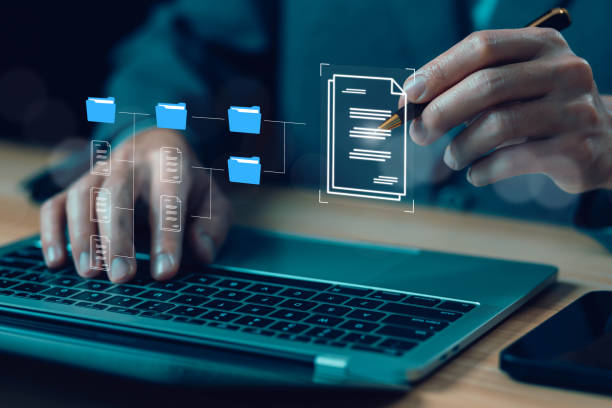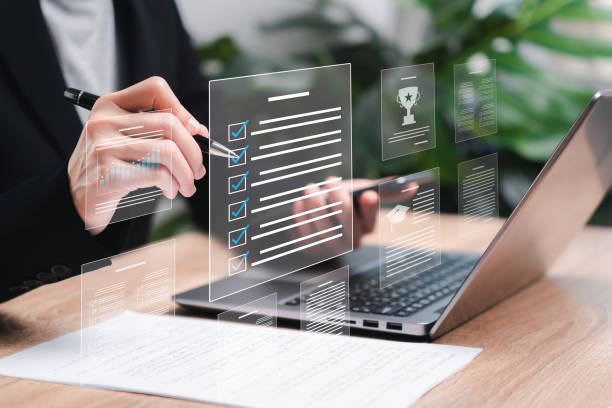The Unrivaled Importance of On-Page SEO in the Digital Age
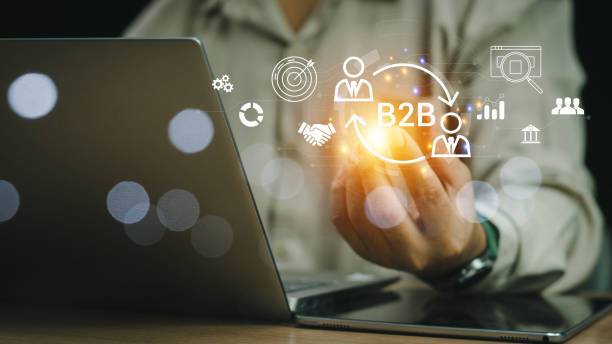
In today’s highly competitive world, where an online presence is vital for every business, #website_optimization for search engines (#SEO) plays a pivotal role.
Among various types of SEO, On-Page SEO is considered one of the most important and fundamental parts, directly affecting your website’s ranking in search results.
Many webmasters and business owners think that SEO is limited only to link building and technical aspects, while without adhering to the principles of On-Page SEO, your external efforts will be fruitless.
This part of SEO includes all actions you can take within your website to optimize it for search engines and, of course, users.
These actions include optimizing content, URL structure, title tags, meta descriptions, and even page loading speed.
A deep understanding of how to correctly use keywords and how to produce content that is both appealing to search engines and meets user needs is one of the basic and most vital parts of a successful SEO strategy.
This comprehensive guide helps you pave your way to achieving top rankings by correctly understanding the principles and techniques of On-Page SEO.
Is your online sales not as expected? With Rasawweb, solve the problem of low sales and poor user experience forever!
✅ Increase visitor-to-customer conversion rate
✅ Create a pleasant user experience and increase customer trust
⚡ Act now for free consultation!
Keywords: The Backbone of On-Page SEO

The correct selection and use of #keywords form the foundation of any successful On-Page SEO strategy.
Without accurately identifying the words and phrases your users search for to find your products or services, you are practically walking in the dark.
The #keyword_research process not only helps you find high-volume search terms but also gives you deep insight into user intent and needs.
Tools like Google Keyword Planner, Ahrefs, Semrush, and Moz Keyword Explorer allow you to discover search volume, competition level, and related keywords.
After selecting target keywords, it’s important to use them naturally and logically in your content.
Excessive use (Keyword Stuffing) is not only unhelpful but can also be penalized by search engines.
Appropriate keyword density, along with the use of synonyms and semantic keywords (LSI Keywords), helps search engines better understand the main topic of your page.
Remember that keywords are not just for the main content; they should also be optimized in the title tag, meta description, URL, Heading tags (H1-H6), and even image file names.
This comprehensive approach to keyword optimization is one of the most effective methods to strengthen your page’s On-Page SEO and provides stronger signals to search engines about your content’s relevance to user queries.
More information about keywords.
Content Optimization for On-Page SEO and User Experience
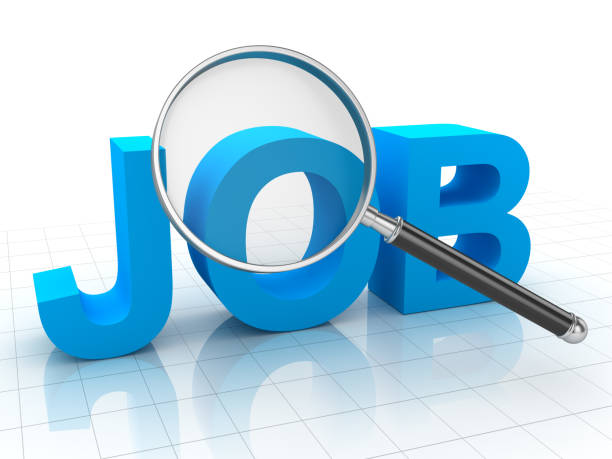
#Content is king; this phrase in the world of SEO clearly demonstrates the importance of producing high-quality and valuable content.
To achieve the best results in On-Page SEO, your content must be optimized not only for search engines but, more importantly, for users.
Excellent content is informative, engaging, and unique.
This means providing accurate and complete information, answering potential user questions, and offering new and fresh perspectives.
Content structure also plays a significant role.
Using short paragraphs, subheadings (H2, H3, H4), lists, and bullet points dramatically increases text readability.
These structural elements help search engines better understand your content and allow users to quickly find the information they need.
Additionally, using #image_and_video_content alongside text not only adds visual appeal to the page but can also improve user experience and increase user dwell time on the page.
Make sure your images and videos are optimized (compressed and have proper Alt tags).
Content length is also important; research has shown that longer, more comprehensive content (with at least 1000 words) tends to rank better, as it usually provides more complete information and demonstrates expertise in that area.
Optimizing content for On-Page SEO goes beyond merely placing keywords; it means creating an unparalleled user experience that encourages users to return and signals to search engines that your page is a credible and valuable resource.
Comparison Table of Content Features Suitable for On-Page SEO
| Feature | Description | Impact on On-Page SEO |
|---|---|---|
| Content Quality and Depth | Providing comprehensive, accurate, and unique information | Increasing page credibility, reducing bounce rate, and increasing dwell time |
| Readability and Structure | Using short paragraphs, headings, lists, and images | Improving user experience, helping bots better understand content |
| Natural Use of Keywords | Logical placement of main and semantic keywords in the text | Strong signaling to search engines about page relevance |
| Visual Elements | Images, video, infographics with appropriate Alt tags and compressed | Increasing engagement and interaction, reducing bounce rate |
These actions are an integral part of On-Page SEO that lead to improved visibility and ranking of your website.
Comprehensive Guide to Content Optimization for SEO.
Technical Aspects of On-Page SEO: Structure and Speed

While content is king, #website_technical_structure provides the kingdom’s foundation.
Technical aspects of On-Page SEO include factors that directly impact your website’s crawlability and indexability by search engines.
One of the most important factors is #URL_structure.
A clean, short, descriptive URL that includes target keywords is not only more understandable for users, but also helps search engines better comprehend the page’s topic.
For example, instead of incomprehensible URLs, use URLs like yourwebsite.com/on-page-seo-guide.
Page loading speed is a very important ranking factor.
Users and search engines, both, prefer fast pages.
Slow websites lead to an increased bounce rate and decreased user experience, which in turn negatively impacts your On-Page SEO ranking.
Using tools like Google PageSpeed Insights and GTmetrix is essential for checking website speed and identifying weaknesses.
Optimizing images, compressing files (CSS, JavaScript), using caching, and leveraging CDN (Content Delivery Network) are among the actions that can significantly increase your page loading speed.
Furthermore, the correct use of #internal_linking helps distribute PageRank throughout your website and signals to search engines which of your pages are more important.
A strong network of internal links not only helps improve On-Page SEO but also facilitates user navigation.
Paying attention to these technical details ensures that search engines can easily find, crawl, and index your content, which is a vital step towards search engine success.
Finally, make sure your robots.txt file is correctly configured to direct search bots to your most important pages and prevent crawling of unnecessary pages.
Also, an updated XML Sitemap file, helps search engines discover and index all your important pages.
These technical actions, form the backbone of a strong and effective on-page optimization strategy.
Test site speed with Google PageSpeed Insights.
Are you tired of your e-commerce website not generating as much revenue as its potential? Rasawweb, specializing in professional e-commerce website design, solves this problem forever!
✅ Increase sales rate and revenue
✅ High load speed and unparalleled user experience
⚡ Get free e-commerce website design consultation!
The Importance of Title Tags and Meta Descriptions in Attracting Clicks

#Title_Tag and #Meta_Description are the first impressions users and search engines have of your page in search results and play a vital role in click-through rate (CTR).
The title tag is the main title of your page that appears in the browser tab and as the main link in search results.
This tag should be attractive, concise, descriptive and include the page’s main keyword.
The ideal length for a title tag is usually between 50 to 60 characters to be fully displayed in search results.
A compelling and relevant title encourages users to click on your link instead of competitors’.
The meta description, a short, summary text that appears below the page title in search results.
Although meta descriptions are not directly a ranking factor for On-Page SEO, they play a very important role in attracting users and improving CTR.
A good meta description should accurately summarize the page’s content, include the main keyword and a call to action (Call to Action) and encourage users to click.
The ideal length for a meta description is around 150 to 160 characters.
Writing unique and compelling title tags and meta descriptions for each page, helps search engines better understand your content and shows users that your page is exactly what they are looking for.
Neglecting these two important elements, can lead to a decrease in CTR, even for pages with excellent content.
Remember that every page on your website should have a unique and optimized title tag and meta description for On-Page SEO.
This helps search engines differentiate between your various pages and prevents duplicate content issues.
Learn to optimize title tags for SEO.
Internal Linking: A Vital Flow in On-Page SEO
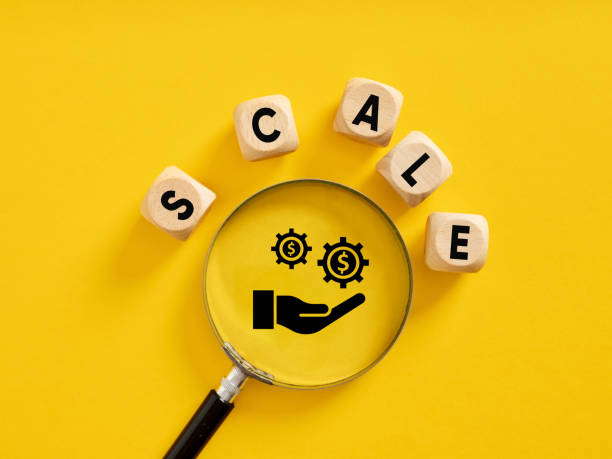
#Internal_linking is one of the most powerful tools available in the On-Page SEO toolkit that is often overlooked.
This process involves creating links from one page to another within the same domain of your website.
Internal links serve multiple roles, each in turn impacting the improvement of your website’s performance in search results.
The first and most important role, is to help search engines #discover and #index new and existing pages.
When you create a new page, if there are no links to it from other pages on your website, search engines may take a long time to find and index it.
The second important role, is the #distribution_of_SEO_authority (Link Equity or PageRank) throughout your website.
Pages that receive quality external links, can transfer this authority to other important pages of the website through internal links.
This helps strengthen less authoritative pages and improves your website’s overall ranking.
The third role, improving #user_experience and #website_navigation.
Relevant internal links guide users to more information on a specific topic and allow them to easily browse your website.
This can help increase user dwell time on the site and reduce bounce rate, which both are positive signals for On-Page SEO.
For the best results, use #anchor_text descriptive and relevant that includes keywords.
Use internal links in the main content of pages, navigation bar, and footer.
Regularly check your internal links to ensure there are no broken links.
A strong internal linking strategy can significantly help improve your website’s visibility and ranking in search results and is a key component of a comprehensive On-Page SEO strategy.
Guide to Internal Linking for SEO.
Image Optimization: A Key Factor in On-Page SEO

#Images not only add visual appeal to your website and improve user experience, but they can also become a valuable source of traffic through image search.
Image optimization is an important part of On-Page SEO that should not be overlooked.
The first step in image optimization, #proper_compression without significant loss of quality.
High-volume images can severely reduce page loading speed which disrupts user experience and negatively impacts your SEO ranking.
Use appropriate image formats (such as JPEG for photos and PNG for images with transparency or line graphics) and employ online image compression tools or WordPress plugins.
The second step, correct use of #Alternative_Text (Alt Text) or Alt tag.
Alternative text, a concise and accurate description of the image content that when the image fails to load for any reason, is displayed and also for users with visual impairments by screen readers is read.
Search engines also use alternative text to understand the image content and its relation to the page text.
Alternative text should include relevant keywords, but avoid keyword stuffing (Keyword Stuffing).
For example, instead of “on-page seo seo on-page seo”, use “comprehensive on-page seo guide diagram”.
Image file names are also important.
Use descriptive and keyword-rich names (like on-page-seo-guide.jpg instead of IMG001.jpg).
Also, adjust image dimensions to suit the page’s needs and avoid dimensions much larger than what is displayed.
Creating #Image_Sitemap can also help search engines discover and index all your images.
By following these tips, you can not only improve your website’s speed, but also gain significant traffic through image search and enhance your overall On-Page SEO performance.
Comprehensive Guide to Image SEO.
User Experience and Bounce Rate: On-Page SEO Indicators
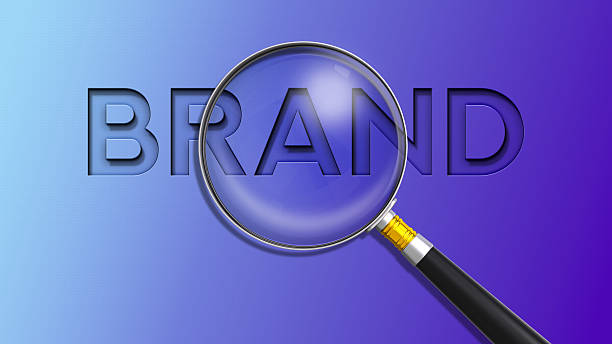
In recent years, #User_Experience (#UX) has become one of the most important factors influencing On-Page SEO.
Search engines, especially Google, are increasingly focusing on user behavioral signals to evaluate the quality and relevance of a page.
If users after entering your page, quickly leave it (high bounce rate) or spend little time on it (low dwell time), these are negative signals to search engines that indicate user dissatisfaction with the content or website experience.
To improve UX and in turn strengthen On-Page SEO, various factors should be considered:
Table of Factors Affecting User Experience and On-Page SEO
| UX Factor | Description | Impact on On-Page SEO |
|---|---|---|
| Responsive Design | Correct display of the website on different devices (mobile, tablet, desktop) | Improved ranking in mobile searches, increased user satisfaction |
| Page Loading Speed | Short time for content to fully display to the user | Reduced bounce rate, improved Core Web Vitals |
| Easy and Intuitive Navigation | Easy access to required information for users | Increased dwell time, improved indexability |
| Content Readability | Using appropriate font, short paragraphs, subheadings | Increased engagement, reduced bounce rate |
Tools like Google Analytics and Google Search Console help you monitor UX metrics such as bounce rate, dwell time on page, and pages visited.
Reviewing this data allows you to identify weaknesses and plan for their improvement.
The ultimate goal, creating a smooth, engaging, and useful user experience that keeps users satisfied and encourages them to stay and interact more with your website.
Optimizing On-Page SEO and UX are both aligned: providing the best possible experience to the user.
The better your user experience, the more positive signals you send to search engines, and ultimately the better your ranking will be.
Concept of User Experience on Wikipedia.
Is your e-commerce site ready to attract maximum customers and increase sales? Rasawweb transforms your online business with modern and efficient e-commerce website design.
✅ Increased speed and improved SEO
✅ Excellent user experience on mobile and desktop⚡ Get free e-commerce website design consultation from Rasawweb!
Troubleshooting Common On-Page SEO Issues
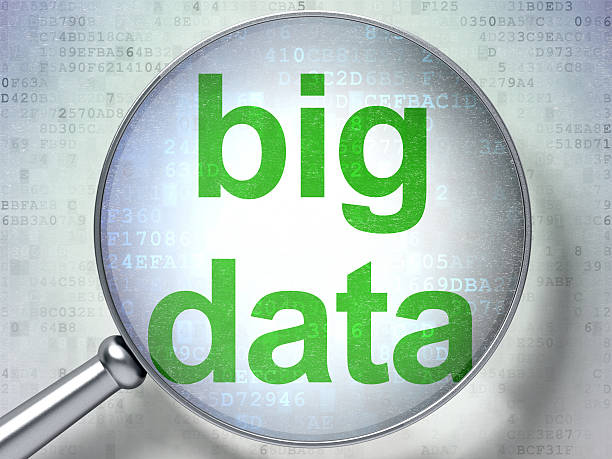
Even with careful planning, you may encounter #common_problems in implementing On-Page SEO.
Identifying and resolving these issues is crucial for maintaining and improving your ranking.
One of the most common problems, #duplicate_content.
This happens when similar or identical content exists on multiple URLs from your website or even on other websites.
Search engines in dealing with duplicate content get confused and cannot decide which version to rank.
To solve this problem, you can use 301 redirects, Canonical Tag (Canonical Tag) or noindex meta tag.
Another problem, #broken_links.
Broken links not only disrupt user experience, but also signal to search engines that your website is not well-maintained.
Use tools like Screaming Frog or broken link checker plugins to identify and fix them.
Also, insufficient optimization of #title_tags and #meta_descriptions can lead to a decrease in CTR.
Make sure each page has a unique, engaging, and keyword-optimized title tag and meta description.
Slow website speed is also a common and important issue.
As previously mentioned, page loading speed directly impacts UX and ranking.
Optimizing images, using Gzip compression, reducing HTTP requests and leveraging CDN can help resolve this issue.
Finally, lack of #mobile_optimization is a catastrophic mistake in the mobile-first era.
Ensure your website has a Responsive Design and displays correctly on all devices.
By fixing these common issues, you can fully leverage the potential of your On-Page SEO and significantly improve your website’s performance in search engines.
Regularly auditing your website and using SEO monitoring tools, helps you identify and resolve these issues before they severely negatively impact your ranking.
Google’s information about canonicalization.
The Role of Core Web Vitals in the Future of On-Page SEO
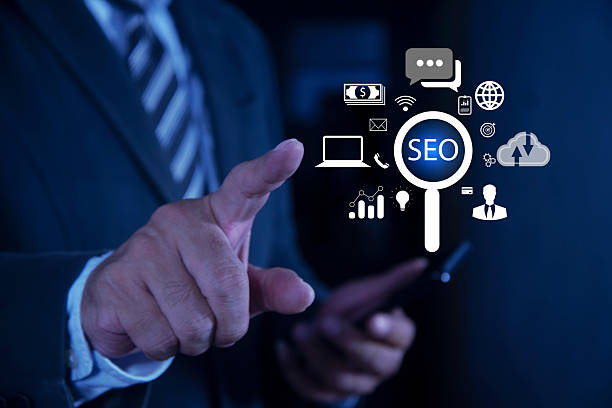
With the introduction of #Core_Web_Vitals by Google, the importance of #User_Experience and #technical_aspects of On-Page SEO has been highlighted more than ever.
Core Web Vitals are a set of metrics related to speed, responsiveness, and visual stability of the website that Google has considered as new ranking factors.
These metrics include three main indicators:
-
Largest Contentful Paint (LCP): The time it takes for the largest visible content element on the page (usually a large image or text block) to load.
Ideal LCP should be less than 2.5 seconds. -
First Input Delay (FID): The time it takes for the browser to respond to the user’s first interaction (such as clicking on a button or link).
Ideal FID should be less than 100 milliseconds. -
Cumulative Layout Shift (CLS): The amount of unexpected visual element shifting on the page during loading.
Ideal CLS should be less than 0.1.
These metrics are directly related to your website’s page loading speed, interactivity, and visual stability.
Improving Core Web Vitals not only significantly enhances user experience, but also sends a strong positive signal to search engines and helps improve your On-Page SEO ranking.
To check your website’s Core Web Vitals, you can use tools like Google PageSpeed Insights, Lighthouse and Core Web Vitals report in Google Search Console.
Identifying and resolving issues related to these metrics includes optimizing images, reducing CSS and JavaScript file sizes, using caching, and ensuring precise dimension definitions for image and video elements.
The importance of these indicators in the future of On-Page SEO is increasing and websites that pay attention to them will have a significant competitive advantage.
Introduction to Core Web Vitals by Google.
Frequently Asked Questions
| Question | Answer |
|---|---|
| What is On-Page SEO? | On-Page SEO refers to a set of actions taken within your website to improve its ranking in search engine results. This includes optimizing content, site structure, and HTML code. |
| Why is On-Page SEO important? | On-Page SEO helps search engines understand your page’s content and determine if your content is relevant to searchers. It is the foundation of any successful SEO strategy. |
| What are the key elements of On-Page SEO? | Title Tag, Meta Description, keyword usage, image optimization, heading structure (H1, H2, …), internal linking, and content quality are key elements. |
| How to optimize a page title (Title Tag)? | The page title should include the main keyword, be attractive and clickable, and be between 50 to 60 characters (or appropriate pixels) in length to be fully displayed in search results. |
| What role does Meta Description play in On-Page SEO? | The meta description is a summary of the page content that appears below the title in search results. Although it does not directly affect ranking, it helps SEO by increasing click-through rate (CTR). |
| What is the importance of using heading structure (H1, H2, H3) in On-Page SEO? | Headings structure the page content and make it easier to read. H1 is usually the main title of the page and should include the keyword. H2 and H3 are used to organize subsections and help search engines understand the content hierarchy. |
| How to effectively use keywords in content? | Keywords should be used naturally and logically throughout the content, including the introduction, body, and conclusion. Avoid keyword stuffing (Keyword Stuffing). |
| What steps are involved in optimizing images for On-Page SEO? | It includes compressing images to reduce size, using descriptive file names, adding appropriate Alternative Text (Alt Text), and optimizing image title and description. Alt Text is crucial for accessibility and helping search engines understand image content. |
| What is Internal Linking and what are its benefits? | Internal linking means creating links from one page on your website to another page on the same website. This helps users easily navigate your site, distributes page authority across the site, and helps search engines better understand your site’s structure. |
| What is the importance of content quality in On-Page SEO? | High-quality, accurate, comprehensive, and valuable content for users is the cornerstone of On-Page SEO. Search engines prefer content that meets user needs. Quality content leads to longer dwell time and reduced bounce rate, which are positive SEO signals. |
And other services of Rasa Web Advertising Agency in the field of advertising
Smart UI/UX: A fast and efficient solution for online growth with a focus on SEO-driven content strategy.
Smart Advertorial: An innovative platform to improve SEO ranking using real data.
Smart Advertorial: An innovative platform to improve website traffic with marketing automation.
Smart Direct Marketing: An innovative platform to improve online growth with intelligent data analysis.
Smart Digital Branding: An effective tool for attracting customers with attractive user interface design.
And over hundreds of other services in the field of internet advertising, advertising consultation, and organizational solutions
Internet Advertising | Advertising Strategy | Advertorial
Sources
Principles of SEO
Advanced SEO Strategies
On-Page SEO Tips
Technical SEO for Beginners
💬 Build the future of your online business with Rasawweb Afarin Digital Marketing Agency. We help you grow and succeed by providing specialized services including SEO-optimized website design, search engine optimization (SEO), and professional social media management. Contact us today and transform your business!
📍 Tehran, Mirdamad Street, next to Bank Markazi, Kazerun Jonoubi Alley, Ramin Alley, No. 6

